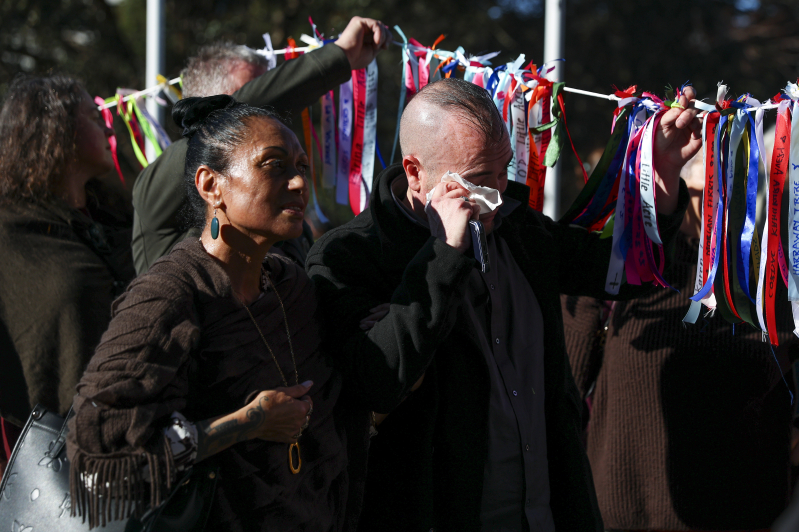
A New Zealand survivor of church abuse has condemned the government’s decision to reject a new independent redress system—recommended by a Royal Commission that uncovered decades of systemic abuse—as a betrayal of victims still waiting for justice.
The New Zealand Government plans to fund existing redress systems to provide compensation for victims of historic abuse in government and church institutions, rather than create new compensation schemes.
A final report on the abuse and neglect of hundreds of thousands of children, youths and adults in the care of State and faith-based institutions in New Zealand between 1950 and 1999 had been published by the Abuse in Care/Royal Commission of Inquiry last July (2024), calling the findings “a national disgrace.”
The hard-hitting report, which included graphic details of abuse and neglect, among others in institutions belonging to Christian faith groups, was released under the title "Whanaketia – Through pain and trauma, from darkness to light" and included a challenge to faith leaders to issue public apologies.
The inquiry heard from 2,329 survivors about the abuse they experienced and how it continues to affect them today.
Some 200,000 vulnerable children, youth and adults, out of 650,000 in care during the period were abused, and “even more were neglected,” according to the report, adding that leaders of faith-based institutions tried to cover up abuse by moving abusers to other locations and denying any involvement.
Erica Stanford, Minister-in-Charge of the redress system, announced the controversial news on Friday, May 9, saying that the government intends to provide $774 million New Zealand dollars ($456,195,600 USD) to fund the already existing system over the next three years.
Stanford confirmed that the government rejected the notion of a Redress System designed by a Redress Design Group, comprised mainly of survivors.
“We know there is nothing we can do to take away the pain of survivors, but the government has committed a significant investment of $774 million NZ [$456,195,600 USD] in Budget 2025 to improve the redress system and strengthen the care system to prevent, identify, and respond to abuse in the future,” said Stanford, in a government press statement
The government “package” includes a 50 percent increase in the “average payment for survivors of abuse in state care, and top-up payments for those who have previously received payment for such abuse. Redress payments for survivors will be increased from an average of $19,180 NZ [$11,304 USD] to $30,000 NZ [$17,682 USD].”
“I acknowledge that a key recommendation of both the Royal Commission and the Redress Design Group was for a new independent redress entity,” admitted Stanford.
“The government was faced with a difficult choice: do we spend more time and money on setting up a new scheme, or do we provide more to survivors now through the current redress process?
“For Budget 25 [announced Friday, May 9] we have prioritised improving the current system as quickly as possible for survivors and investing in changes that have a direct impact for them,” Stanford added.
However, Frances Tagaloa—who was sexually abused “multiple times” as a little girl by Catholic clergy and later experienced “flashbacks” during her time at university—criticized the government’s response for failing to follow the Royal Commission’s recommendation for an independent redress system.
Tagaloa was one of more than 2,000 survivors who testified to the inquiry. She contacted Christian Daily International to express her distress that survivors’ voices were still being sidelined in the development of redress measures.
She described the government’s decision as a betrayal of survivors, particularly those abused in faith-based institutions, and said the move fell far short of the justice they had long awaited.
"There is no room for redress for faith-based survivors. Once again faith-based survivors are forgotten and silenced. The government has had many years to work on an independent redress system for faith-based and state survivors with clear recommendations of the need for an independent redress system. It's nonsense that the issues are too complex for faith-based redress."
Tagaloa reemphasized that the government rejected the proposal of a Redress System designed by a Redress Design Group made up of mostly survivors.
"This government response is not what was recommended by the Royal Commission of Inquiry into Historical Abuse in Care. It's not an independent redress system," she added.
"Instead the government is continuing with the broken and piecemeal state redress processes that the Commission and its reports highly criticized. Tinkering with the many state redress processes and making little changes here and there falls far short of the Royal Commission's vision."
Tagaloa said that the abuse survivors were not the only people experiencing disappointment at the government's actions. She pointed out that "faith-based institutions have also been let down."
"Many of them need guidance on redress and how to create a safe, independent confidential place for survivors to be able to obtain redress and navigate their abuse," said Tagaloa. "Now that there will be no independent redress system what do faith-based agencies do? They also are waiting and often continuing with unsafe and retraumatizing processes for redress or more often no redress at all.
"Us faith-based survivors continue to be made to wait for redress. We wait for justice. We wait for the government to do what is right. We are dying while we wait."
In a video titled, My story of Hope, produced for Church Northwest, in Hobsonville Pt, NZ, Tagaloa has previously recalled how finding a personal relationship with Jesus Christ changed her life and helped her with the traumatic events of the past.





